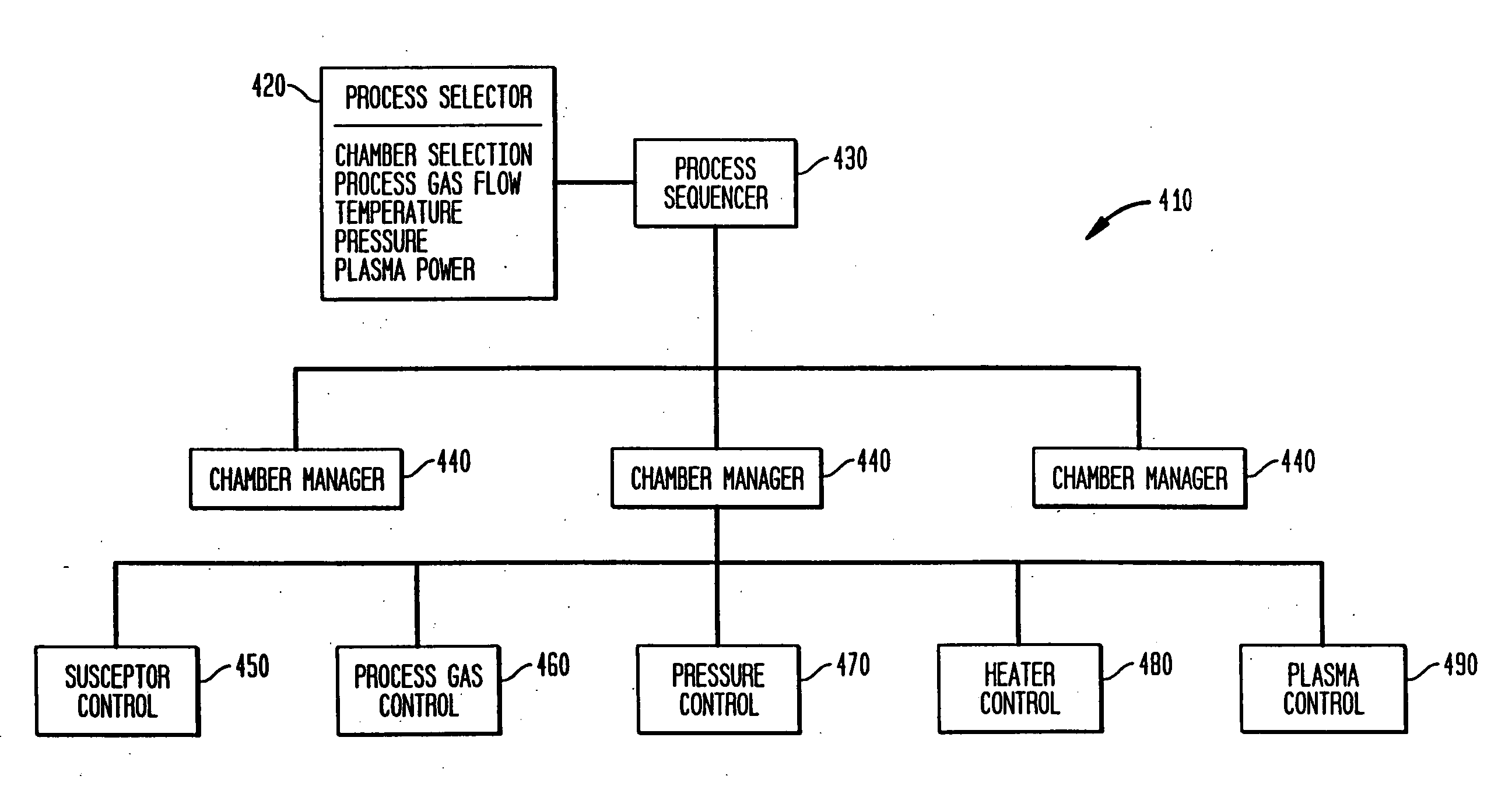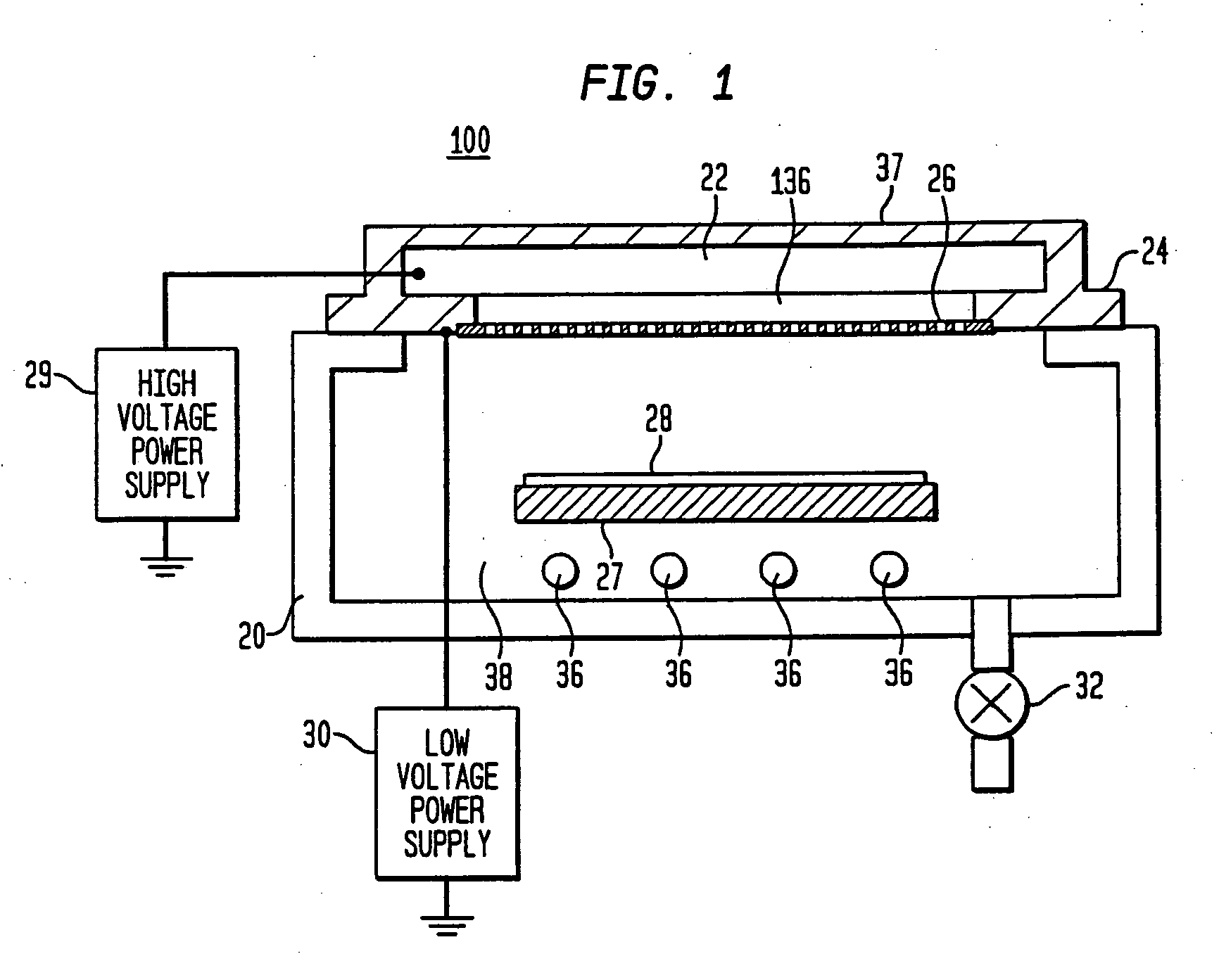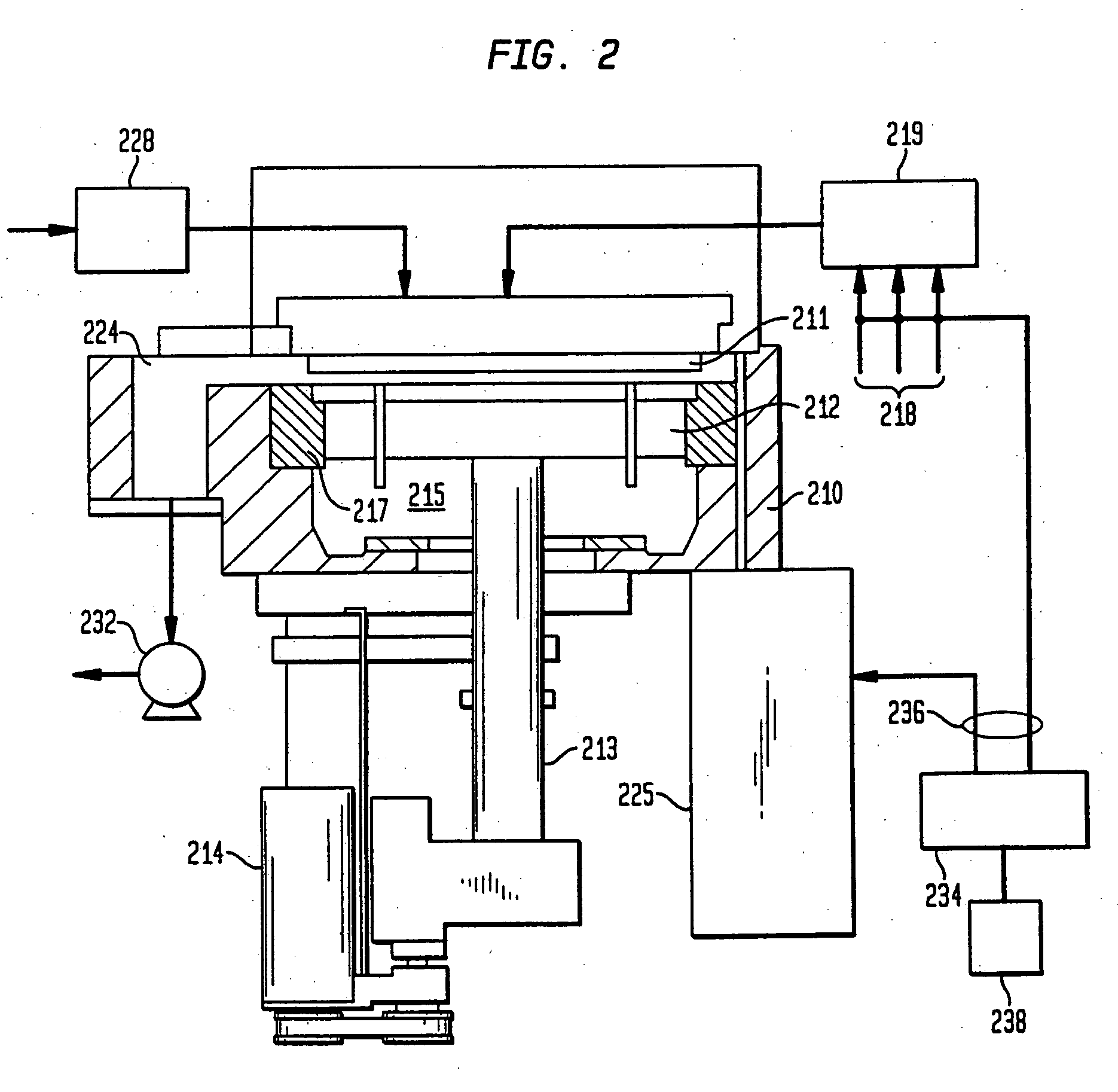Methods and apparatus for e-beam treatment used to fabricate integrated circuit devices
a technology of electron beam treatment and integrated circuit, which is applied in the direction of semiconductor/solid-state device details, coatings, chemical vapor deposition coatings, etc., can solve the problems of rc delay, power consumption, crosstalk, and increasing complexity of fabrication
- Summary
- Abstract
- Description
- Claims
- Application Information
AI Technical Summary
Benefits of technology
Problems solved by technology
Method used
Image
Examples
example 3
[0088] A low dielectric constant film was deposited on a 200 mm substrate from the following reactive gases at a chamber pressure of about 6 Torr and substrate temperature of about 400° C. [0089] Octamethylcyclotetrasiloxane (OMCTS), at about 5,000 mgm; [0090] Trimethylsilane (TMS), at about 600 sccm; [0091] Ethylene, at about 2,000 sccm; [0092] Oxygen, at about 1,000 sccm; and [0093] Helium, at about 1,000 sccm
[0094] The substrate was positioned 1,050 mils from the gas distribution showerhead. A power level of about 800 W at a frequency of 13.56 MHz was applied to the showerhead for plasma enhanced deposition of the film. The film was deposited at a rate of about 12,000 Å / min, and had a dielectric constant (k) of about 2.47 measured at 0.1 MHz.
example 4
[0095] A low dielectric constant film was deposited on a 200 mm substrate from the following reactive gases at a chamber pressure of about 6 Torr and substrate temperature of about 400° C. [0096] Octamethylcyclotetrasiloxane (OMCTS), at about 5,000 mgm; [0097] Trimethylsilane (TMS), at about 800 sccm; [0098] Ethylene, at about 2,000 sccm; [0099] Oxygen, at about 1,000 sccm; and [0100] Helium, at about 1,000 sccm
[0101] The substrate was positioned 1,050 mils from the gas distribution showerhead. A power level of about 800 W at a frequency of 13.56 MHz was applied to the showerhead for plasma enhanced deposition of the film. The film was deposited at a rate of about 12,000 Å / min, and had a dielectric constant (k) of about 2.47 measured at 0.1 MHz.
example 5
A low dielectric constant film was deposited on a 200 mm substrate from the following reactive gases at a chamber pressure of about 6 Torr and substrate temperature of about 400° C.
[0102] Octamethylcyclotetrasiloxane (OMCTS), at about 5,000 mgm; [0103] Trimethylsiiane (TMS), at about 900 sccm; [0104] Ethylene, at about 2,000 sccm; [0105] Oxygen, at about 1,000 sccm; and [0106] Helium, at about 1,000 sccm
[0107] The substrate was positioned 1,050 mils from the gas distribution showerhead. A power level of about 800 W at a frequency of 13.56 MHz was applied to the showerhead for plasma enhanced deposition of the film. The film was deposited at a rate of about 12,000 Å / min, and had a dielectric constant (k) of about 2.48 measured at 0.1 MHz.
PUM
| Property | Measurement | Unit |
|---|---|---|
| feature sizes | aaaaa | aaaaa |
| boiling point | aaaaa | aaaaa |
| pressure | aaaaa | aaaaa |
Abstract
Description
Claims
Application Information
 Login to View More
Login to View More - R&D
- Intellectual Property
- Life Sciences
- Materials
- Tech Scout
- Unparalleled Data Quality
- Higher Quality Content
- 60% Fewer Hallucinations
Browse by: Latest US Patents, China's latest patents, Technical Efficacy Thesaurus, Application Domain, Technology Topic, Popular Technical Reports.
© 2025 PatSnap. All rights reserved.Legal|Privacy policy|Modern Slavery Act Transparency Statement|Sitemap|About US| Contact US: help@patsnap.com



